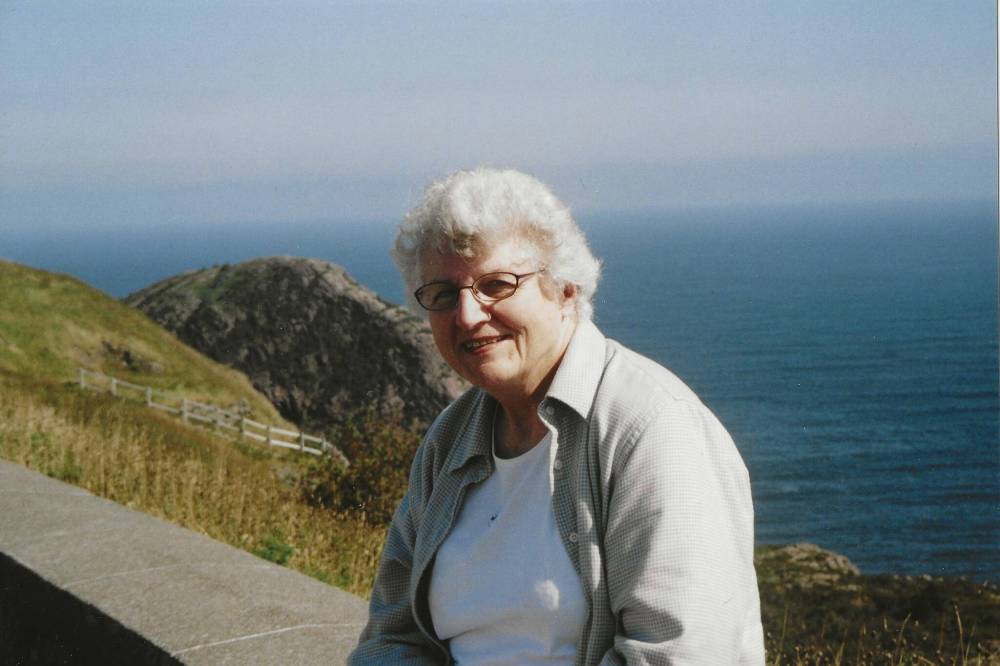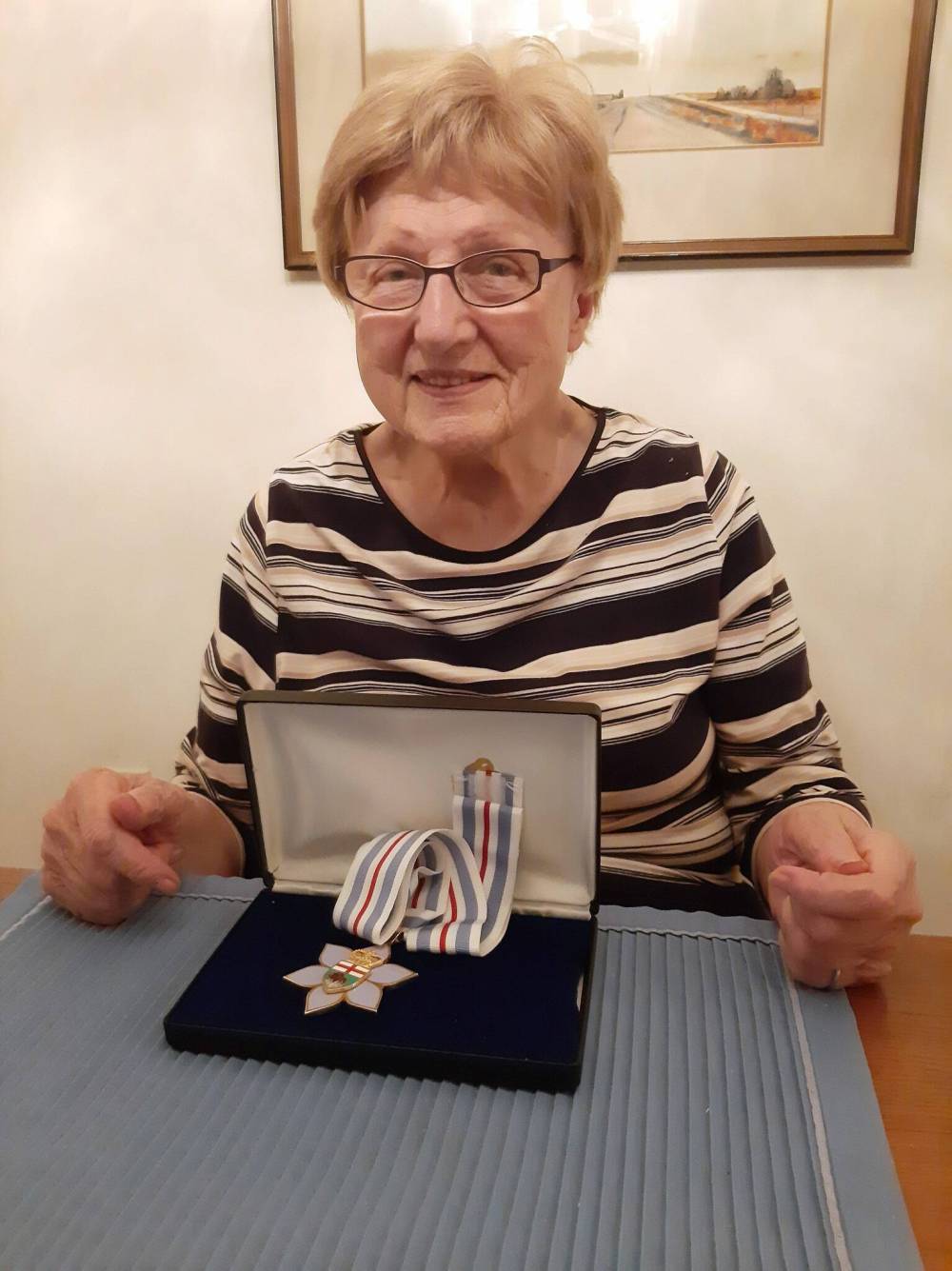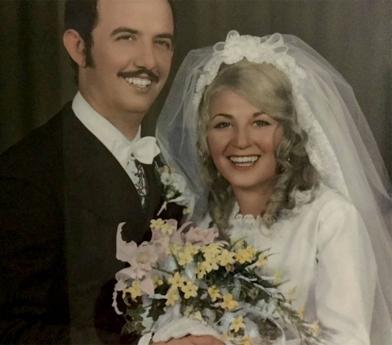A Life's Story
February 24, 2024
‘Our best advocate and our best promoter’
Vivian Bruce, 92, part of pioneering U of M research into canola oil
By: Gabrielle Piché
It can safely be said Vivian Bruce cooked with canola oil.
Timothy Long never scoured her pantry, but he figures it was in there. She was, after all, instrumental in early research that propelled canola oil to global success. In 2019, she received the Order of Manitoba for her work.
“(She’s) someone who I only came to appreciate more and more as I got older,” Long says. The appreciation grew as he sat in her Osborne Village high-rise, talking over tea.

Bruce was his father’s cousin and 30 years his senior. Long stayed with her during treks between his home province of Saskatchewan and New York, where he was going to school. (Flights out of Winnipeg were easier to come by, he says.)
Bruce would hand him a warm drink and regaled him with stories about work, family and travel.
“I could never keep up,” Long laughed. “There are so many people that she knew and was connected to.”
Bruce — a longtime University of Manitoba educator and researcher — died Oct. 12, 2023, at 92, after a period of declining health.
Born May 4, 1931, Bruce grew up the only child of a grain buyer for the Saskatchewan Wheat Pool. Her family moved to Regina in her teenage years.
She graduated from Balfour Technical School prior to getting her bachelor of science degree from the U of M.
In the 1950s, after beginning her career in dietetics at University Hospital in Saskatoon, a patient was diagnosed with adult celiac disease, which was largely unknown then, Long recalls.

Bruce took it upon herself to search Western Canada for a mill that processed oats separately from wheat. She eventually found a place outside Brandon that suited her needs. It meant her patient could eat porridge.
“It just spoke to her determination and the kind of tenacity it took to do that research,” long before the internet, Long says.
In 1960, Bruce completed a master’s degree in nutrition at the U of M. In 1963, she began a 33-year career at the Winnipeg-based school. (She obtained a doctorate degree from the University of Wisconsin in 1972.)
Much later, Long asked Bruce for “the whole story” about her work with canola oil. Her time managing human trials stuck out to him, Long says.
Bruce and colleague Bruce McDonald explored the nutritional content of canola oil; the work included Bruce creating a diet where test subjects consumed foods prepared with the new product made from crushed canola seeds.
Bruce also researched the effects on cholesterol, among other health indicators.
“Nobody had heard of canola oil,” notes Michael Eskin, a fellow professor also studying the substance at the time.

Eskin tested its composition, stability and performance properties; Bruce was a close colleague, well-respected and organized.
The researchers knew it was a “remarkable oil” — its fat composition proved that — but they couldn’t guess the impact it’d have on Canada’s agricultural landscape, Eskin says.
Canola is now Manitoba’s biggest crop.
In 2022, exports of canola seed, oil and meal totalled $2.5 billion for Manitoba’s economy. The number balloons to $14.4 billion when tracking the entire country, Canola Council of Canada data show.
Canadian farmers produce 20 million metric tonnes of canola oil annually. It’s touted as lowering risk of heart disease — a note taken from Bruce’s pioneering research.
“(She) set the groundwork for canola to be in-demand all over the world,” says Delaney Ross Burtnack, executive director of the Manitoba Canola Growers. “We are grateful to Dr. Bruce for her legacy that our industry is built on.”
Kelley Fitzpatrick travelled to Asia while working at the Canola Council of Canada in the early 1990s. She pitched canola oil’s benefits by using, in part, findings from Bruce and McDonald.

Fitzpatrick credits the two professors for helping her get the job. Bruce had been her master’s degree adviser and, firstly, had encouraged Fitzpatrick to pursue higher education.
“She just made me feel like there was a place for young women in the sciences,” Fitzpatrick says.
At the time, there were fewer females leading in the industry. Bruce became her role model and confidante.
Bruce proudly talked about her graduate students often. She threw Fitzpatrick a party when the younger woman finished school.
“She was our best advocate and our best promoter,” Fitzpatrick says. “She made us feel like her family.”
Bruce was the only non-family member Fitzpatrick invited to her intimate wedding. The two kept in touch, with Bruce sending updates in Christmas cards.
She was funny and had “so much foresight” in her field, Fitzpatrick says.

“She really knew all of the students,” recalls Shaunda Durance-Tod, another former pupil. “She remembered you, she made you feel welcome.”
Bruce educated an entire wave of Manitoba dietitians, according to Durance-Tod, who now works for the Canola Council of Canada and leads the College of Dietitians of Manitoba as executive director.
Bruce left other marks at the University of Manitoba, including protecting the net for the first women’s intramural hockey team, braving the outdoor rinks while men played inside, Long says.
She retired from her career in the late 1990s, but remained active at the University Women’s Club of Winnipeg.
During the COVID-19 pandemic, Long and his siblings would video call Bruce. She’d tell them about her weekly meals from the club.
“That was Vivian — she loved a good meal,” Long says. “She was just one of those people who really embraced life in all its fullness.”
Bruce helped with refugee sponsorship at Crescent Fort Rouge United Church; she travelled with a friend often, visiting countries including Spain and Greenland.

Her recognition by the Order of Manitoba was a banner moment in her family. Relatives from Saskatchewan visited for the event; Bruce didn’t marry or have children.
“We were tremendously proud,” Long says.
gabrielle.piche@winnipegfreepress.com
A Life's Story
December 13, 2025
Born to be wildly enthusiastic
Full-hearted family man, actor, photographer, teacher, motorcyclist lived life at full throttle
View MoreA Life's Story
December 06, 2025
A winning hand
Devoted matriarch made most of cards she was dealt
View MoreA Life's Story
November 29, 2025
She made life better for others
Accomplished artist, musician and entrepreneur who designed clothes for breast cancer patients always put others before herself
View More






